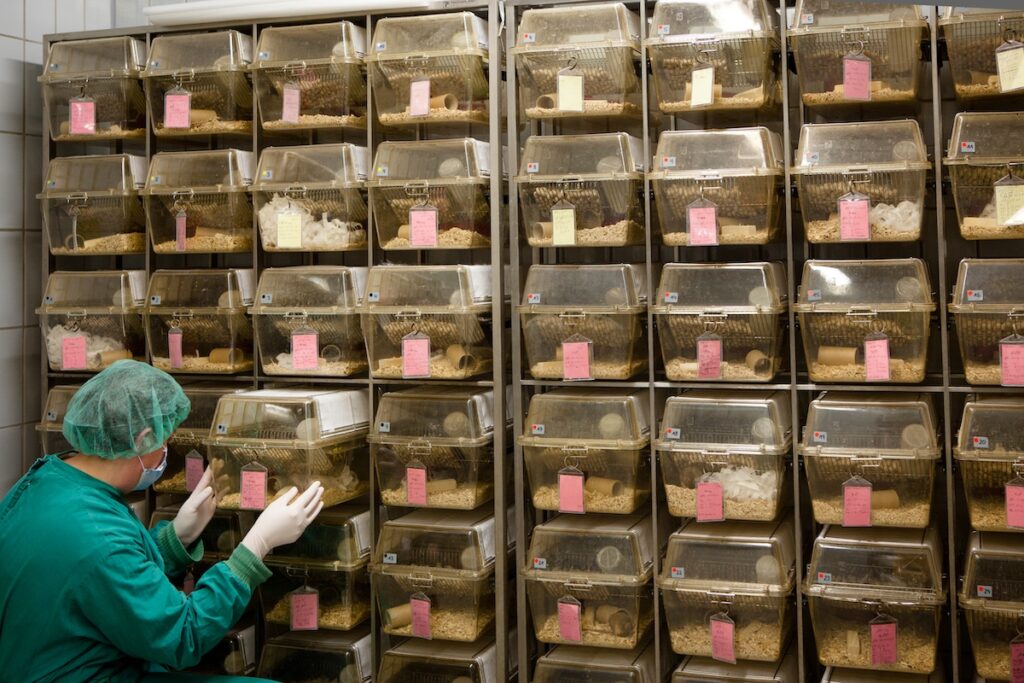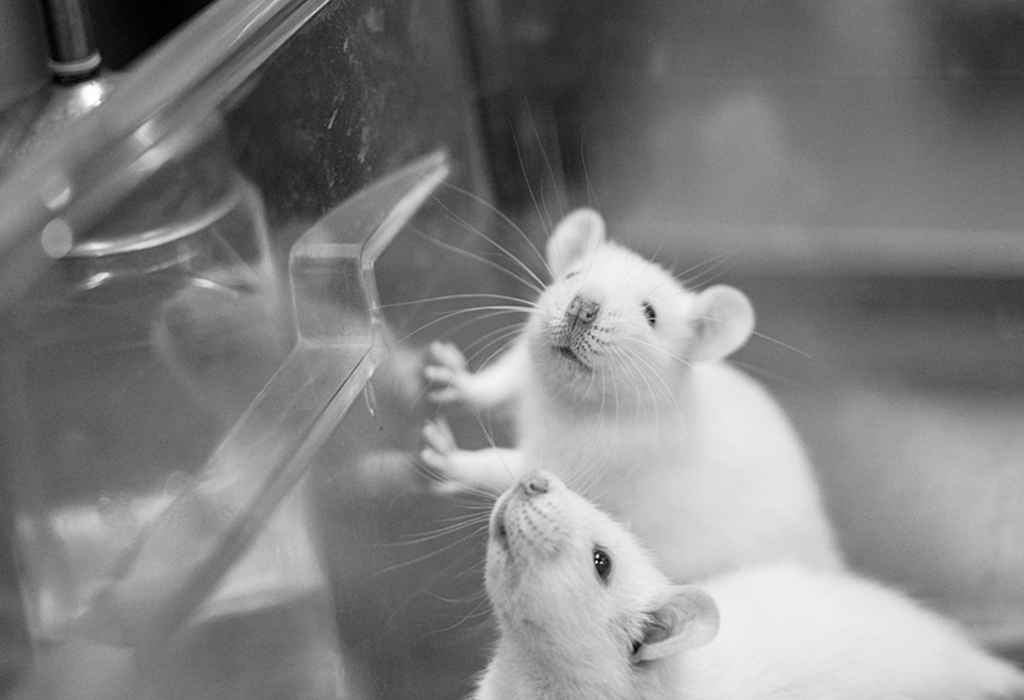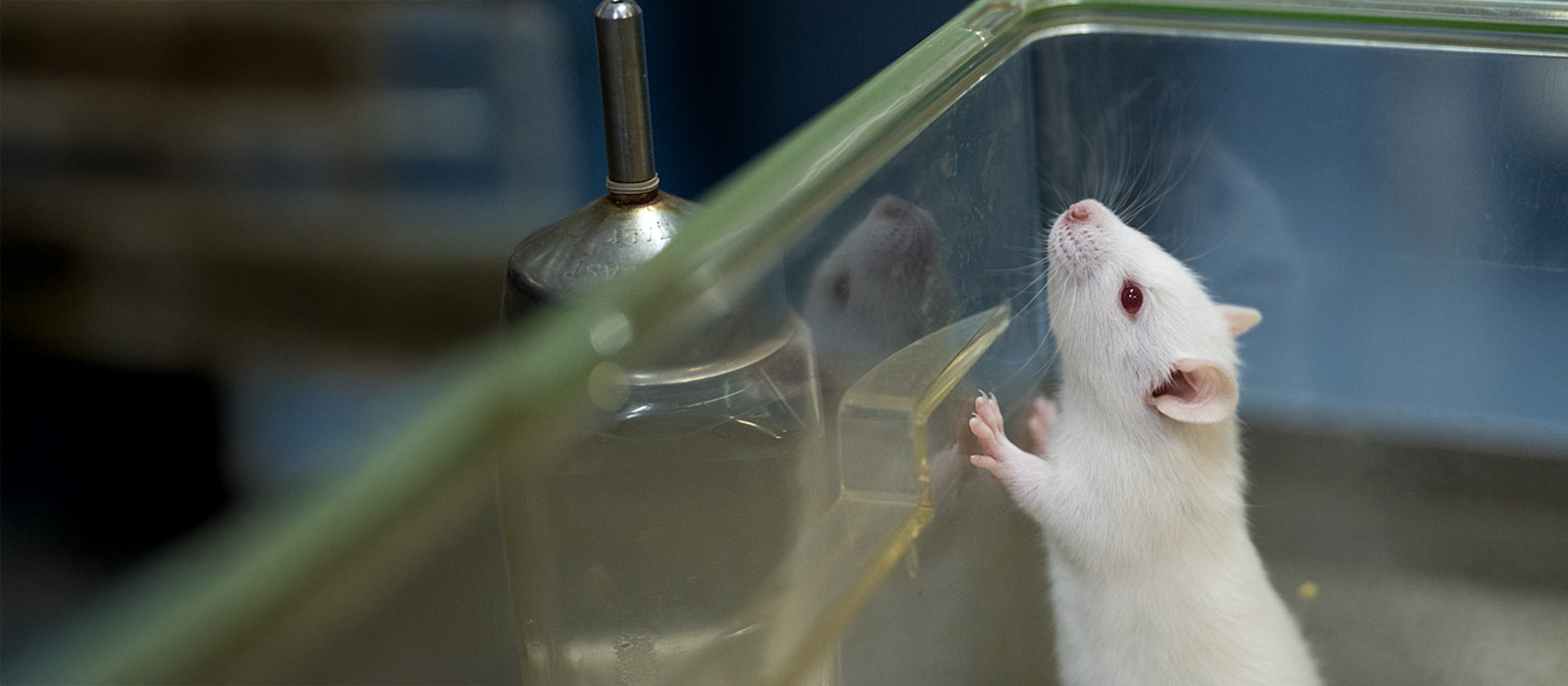The LD50 test, originally designed in 1927, stands for ‘lethal dose 50%’. It involves giving live animals increasing doses of a substance until half of them die. This informs scientists of a substance’s ‘lethal dose’.
Despite major advances in animal-free toxicology, the LD50 and similar tests continue to use millions of animals every year – including thousands in Britain. In 2023 more than 11,500 procedures were conducted on animals for LD50 and similar tests. Their symptoms? Tremors, convulsions, swellings, bleeding from the mouth and nose, bulging eyeballs, difficulty breathing, and more.
Watch our animated film on the cruel and outdated LD50 test on animals

Animal Aid was founded in 1977 to campaign against animal experiments, and our earliest years were dedicated to the LD50 – more than 45 years ago. In 2022 we co-funded a completely animal-free replacement to the LD50. This method, called AcutoX, is now being used by multinational companies and saving animals’ lives.
Read more about AcutoX: the world’s first alternative to LD50
Since the invention of the LD50 test in 1927, so much has changed. We have launched rockets and satellites into space, designed computers that we can carry in our pockets, and created artificial intelligence that is on the verge of transforming the world as we know it. So why do we continue to harm animals with cruel and outdated science?

Take action for animals in laboratories
Experimenting on animals is cruel and outdated but also futile, as experiments on animals do not reliably predict outcomes in humans. Take action today for better science tomorrow.

